What are sequins and where are they used?
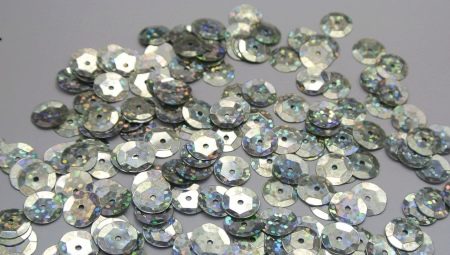
Shiny sequins in various sizes and shapes are now easy to find on sale. They are often used to decorate outfits, accessories and decor items. Moreover, anyone can sew a fabric product with them.

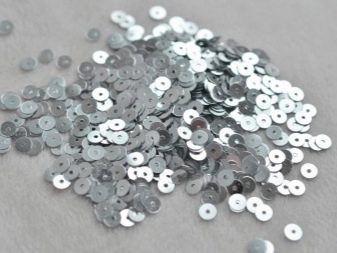
What it is?
Sequins are shiny thin parts with a hole for fastening. Most often, there are round-shaped ornaments. But there are also multifaceted or curly sequins. Their name comes from the French word that translates as "crystal". This is due to their ability to reflect rays of light.
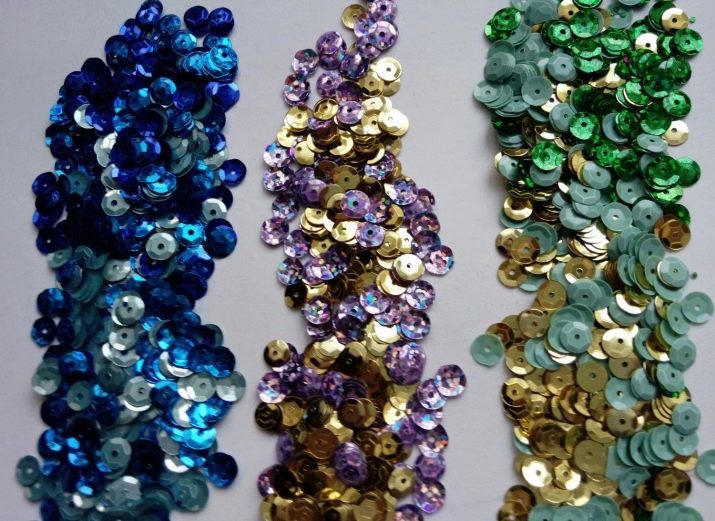
The product can be attached to any type of fabric. In the process of creating things on an industrial scale, "sequins" are sewn to the fabric using sewing machines without an overlock. In other cases, they are sewn by hand. It takes more time, but the result is worth it. Handmade work looks neater. In addition, a thing decorated with sequins can serve its owners much longer.
You can buy multicolored sequins at almost any craft store.
They are inexpensive, so they are very popular among creative people.
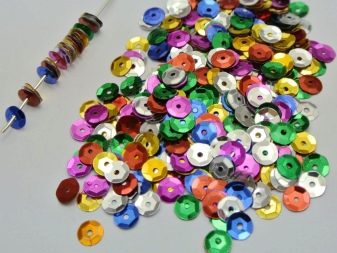
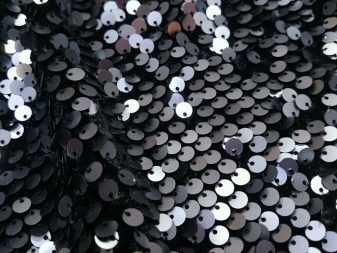
History of appearance
Many people think that sequins are some kind of novelty in the fashion world. But in fact, such decorations appeared several thousand years ago. Initially, people attached dried fish scales and specially treated insect wings to their clothes. Outfits adorned with shiny details were especially popular among Indian women and Arab dancers. So they attracted the views of the audience.
In Europe, fashionistas began using shiny details to decorate accessories and clothing around the 16th century. Items from that time can still be seen in European museums. They look graceful and impressive.
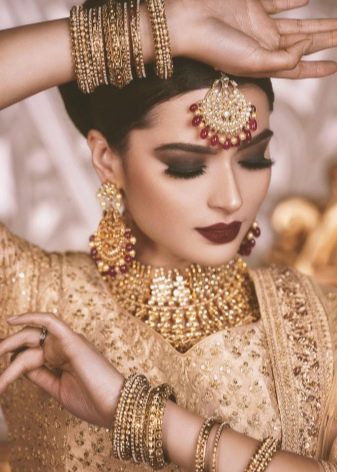
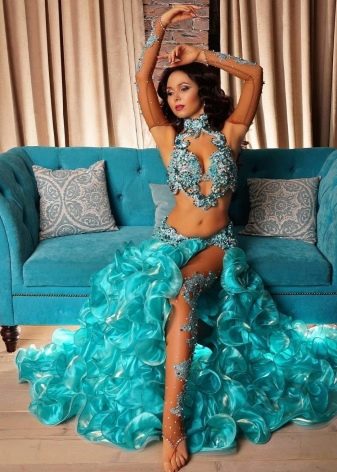
Next time, attention was paid to things decorated with shiny scales in the Art Nouveau era. At this time, many things were decorated with sequins, including linen. The shiny parts themselves began to be made from celluloid. This material was flexible and durable. Therefore, the crafts turned out to be more practical. In the 1920s and 1930s, cabaret dancers and actresses began to sew them on their clothes. This helped them to remain the center of attention in the light of bright lamps.
In the modern world, shiny sequins are actively used to decorate accessories, shoes and clothing.
In addition, you can often see their embroidered pillows and embroidered paintings.
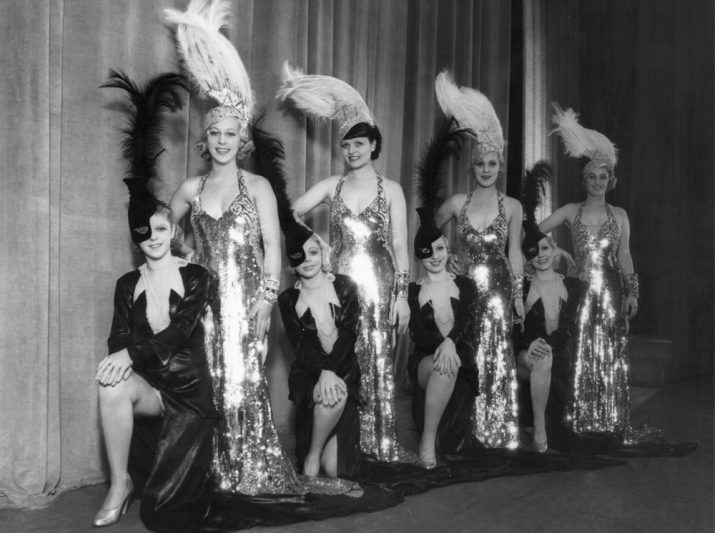
Design and colors
Sequins are usually sold in bulk. The most common option is plain shiny circles with a smooth surface. They serve their owners the longest. Coated products deteriorate much faster.
According to their shape, sequins are divided into several groups.
- Round. It is these decorative details that are most often used to decorate things. They look the same from all angles. On the surface of the fabric, such details fit very easily. Round sequins are ideal for creating both volumetric patterns and solid fabrics.
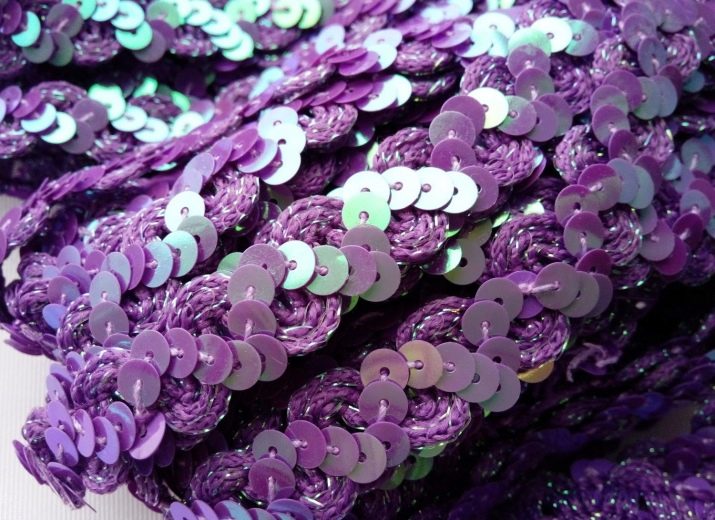
- Rectangular. Slightly elongated, sharp-edged parts can be positioned either straight or at an angle. Usually in such sequins there is not one, but two holes. Therefore, they are attached to the surface of the fabric much more reliably.
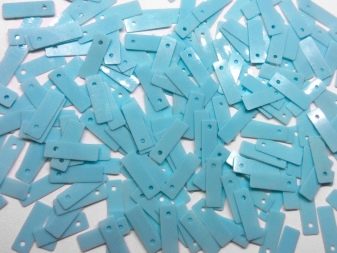

- Free form. These sequins are often also called fancy sequins. They can be made in the form of flowers, stars, sheets or shells. They are attached to the fabric in the same way as ordinary round parts. Usually they are not fixed in continuous rows - as a rule, small gaps are left between the sequins. This allows you to draw attention to specific areas of the outfit.
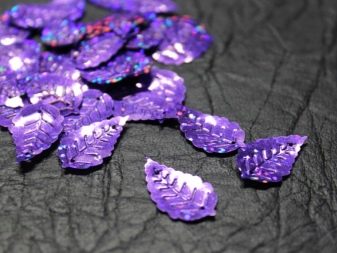
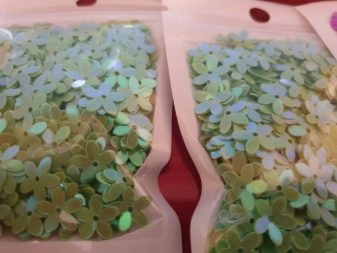
The brilliant details also differ in their color.
- Classic. Most often, monochromatic sequins of classic colors are used in the work. Black, white, red, green or blue details go well with most fabrics.

- Unusual. You can use gold or silver details to decorate spectacular festive outfits. The use of such sequins allows you to make any look more luxurious.
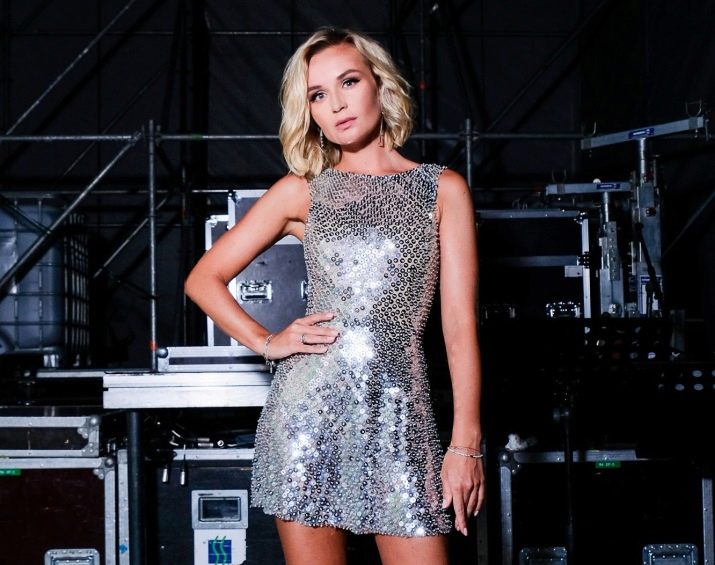
- With a gradient. These sequins are considered the most interesting. Under the rays of light, their color changes from one shade to another. This makes the fabric embroidered with "scales" especially beautiful.
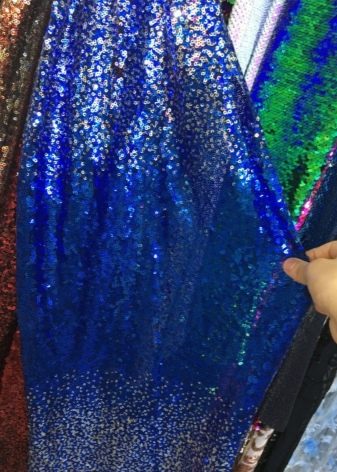
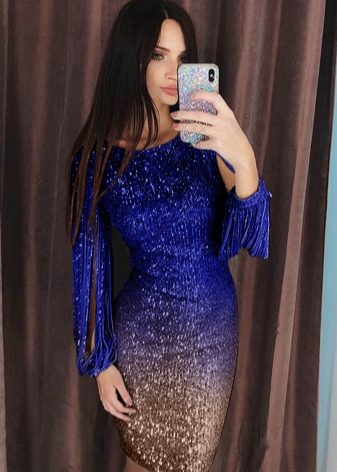
- Bilateral. Such products are most often seen on decorative pillows or toys. The peculiarity of such jewelry is that they easily change color if you iron them. As a rule, shiny "scales" are made in one color scheme. But there are also beautiful contrasting sequins.
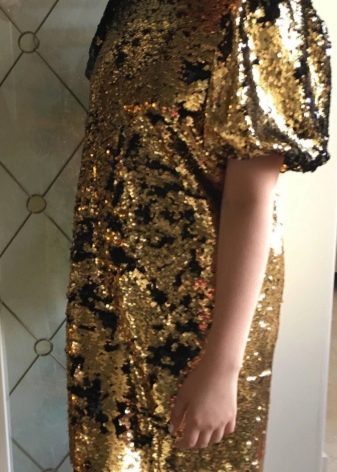
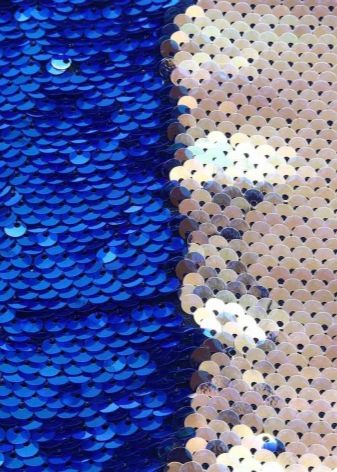
Colored parts of different types are perfectly combined with each other. Sequins are usually stored, having previously sorted by color and size, and also arranged in small containers. It is desirable that they are tightly closed with lids. In this case, small details cannot be accidentally lost.

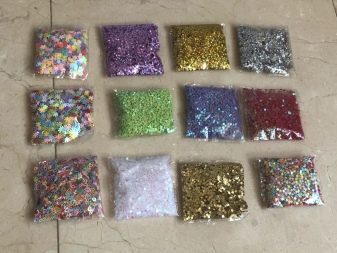
Dimensions (edit)
Sequins differ in their size. Both small and large "scales" can be found on sale. The most common option is sequins with a diameter of 5-7 mm. They are considered versatile and are most often used to decorate clothing and accessories.
Larger pieces are usually used to embroider specific areas. They decorate things completely only if the sequins are not too tight.
Small "scales" are suitable for accents. Moreover, they can be used to decorate small accessories.
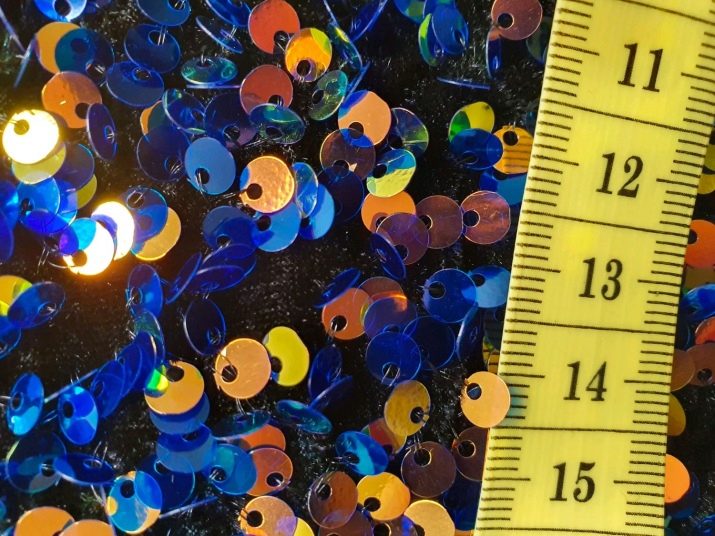
Where are they used?
The fashion for sequins is cyclical. Therefore, they are used to decorate many things.
Garment decoration
Outfits decorated with sequins are popular with both young girls and adult women. Things embroidered with such details are very light. Therefore, wearing them is much more comfortable than outfits with beads, crystals or bulky beads.
Shiny things draw attention to themselves and make any look brighter. To look beautiful in a dress with sequins, it is advisable to combine them with simpler fabrics or accessories. Dresses embroidered with sequins look best when paired with plain jackets or basic jackets.
Simple trousers or jeans are usually selected under a bright top.


But sequined outfits have their drawbacks. First of all, such things are not always comfortable to wear. Sharp sequin edges can scratch leather or other delicate fabrics. This is especially true for outfits fully embroidered with such details.
In addition, products with such decor require special care.
- Before washing, items decorated with sequins are wrapped in cotton fabric. Only then are they placed in a washing machine or container with warm water.
- It is best to use a delicate powder for washing. Conditioner and bleach are not recommended. This will quickly fade things out.
- There is no need to soak things with sequins. It will also negatively affect their condition.
- You need to dry clothes in a horizontal position. They are pre-soaked with a terry towel. After that, products with sequins are laid out on a table or in a special clothes dryer.
- You can iron things only from the wrong side. It is impossible to iron or steam the attachment point itself. This can lead to loss of shape or discoloration of decorative details.
- It is best to store clothes decorated with sequins in a fabric cover. The outfits folded in piles can be shifted with tissue paper.


If you do everything right, things with voluminous "scales" will serve their owners for a long time.
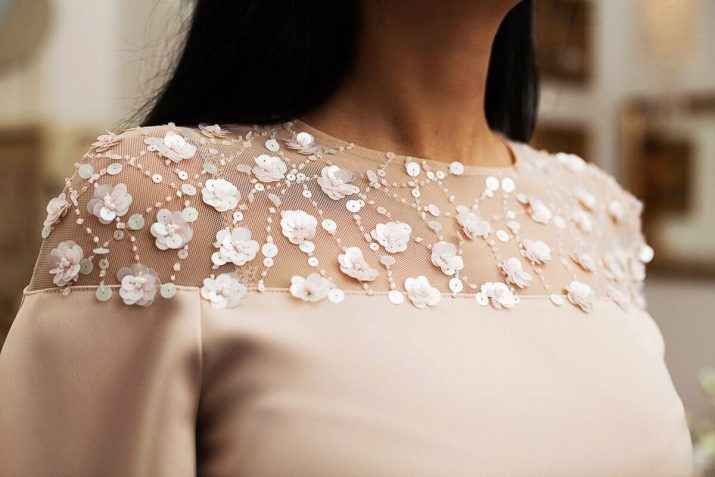
Home decor
Bright plates are often used to decorate household decor. Sequins can be sewn onto fabric in a continuous layer. But more often they are used to create original applications on the surface of things. Products are decorated with flowers, figurines of animals or fairy-tale characters. Sequins are used to embroider curtains, pillowcases for decorative pillows, fabric lampshades. They are not used for decorating blankets.
Fans of original crafts, along with beads and beads, also use sequins for embroidering pictures or creating volumetric flowers and other figures. They look interesting on shelves or on a desktop.
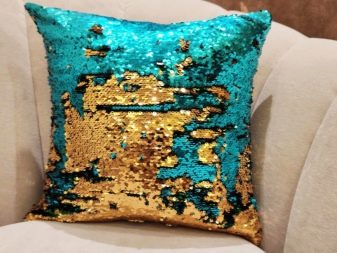
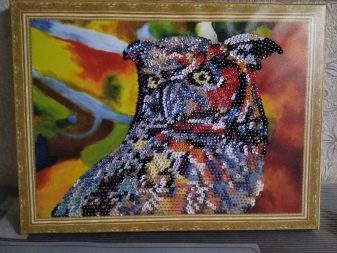
Curtains, pillowcases and other things decorated with sequins need the same care as regular outfits. It is advisable to wash them by hand and dry them horizontally. Paintings and other sequin crafts are usually cleaned with small soft bristles or wiped with a damp cloth. So that they do not lose their attractiveness longer, it is important to keep them away from direct sunlight.

How to sew?
Sew-on sequins are attached to the fabric with a strong thread. It is best to use lavsan material. Regular sewing or embroidery threads are not suitable for attaching colored "scales". They are not as strong and can tear when attaching the decor or wearing the thing. The shade of the thread is matched to the color of the sequins or fabric.
A long needle should be chosen. Its thickness depends on the fabric you will have to work with. It is also important that her eyelet can freely pass through the hole in the sequin.

Sewing on the details is best at the table. The area should be well lit. It is very important that there is enough free space on the desk for work. All the necessary tools and materials must be obtained in advance and laid out next to you. Only after that you can start working. There are several ways to attach sequins to fabric.
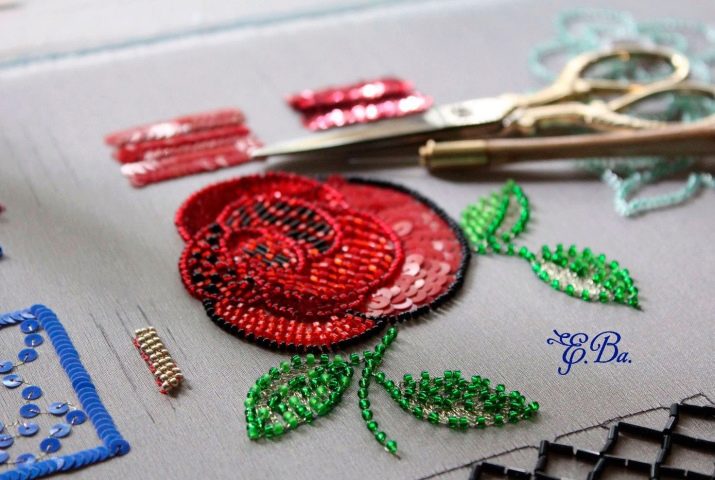
Continuous seam
The classic way of fixing colored parts is as follows.
- First, a thread is threaded into the needle. A small knot is tied at its end.
- Next, make the first stitch. The fabric is pierced with a needle in the place where the sequin should be located.
- A shiny piece is carefully put on the needle. Then it is lowered onto the fabric.
- After that, a short stitch is made with a needle, winding its tip over the edges of the sequin.
- The next sequin is behind the first. To fix it, the needle is taken out in the place where its center should be.
- Further, the second sequin is fixed according to the same principle as the first. The rest of the details are sewn to the fabric in the same way.
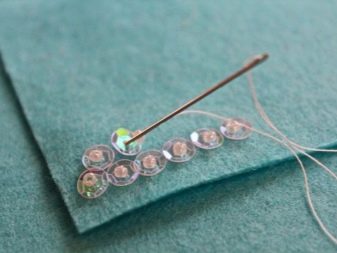
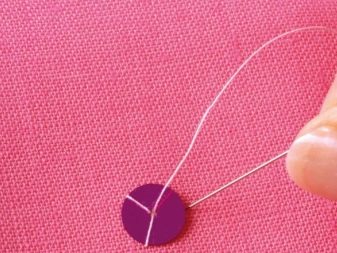
You can arrange sequins in this way both next to each other and overlapping. The main thing is to do everything carefully, without making mistakes.

Bird's foot stitch
This method of attaching sequins is also popular. Things decorated in this way do not deteriorate after washing. The pattern does not move to the side, its individual parts do not come off.
The process of attaching the "scales" looks very simple. The sequin is placed on the surface of the fabric and sewn to the base of the material with several stitches. Usually they are made in the form of a "bird's foot", placing one in the middle of the sequins and two side by side.

With beads
Separate parts are attached by sewing on a small bead or bead from the seamy side. In this case, elements of similar shades are usually used. The step-by-step process of sewing sequins along with beads consists of the following steps.
- A colored shiny circle is applied to the desired part of the fabric.
- From the seamy side of the fabric, thread the tip of the needle into the sequin.
- A small bead is leaning against the fabric from below.
- Next, a thread is pulled through it. The sequin is tightly sewn to the surface of the fabric.
- In the same way, other sequins are fixed next to it.
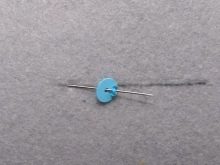
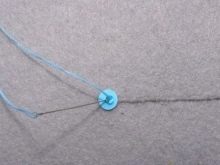
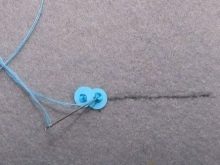
This method of sewing shiny pieces to a fabric surface is very reliable. It is usually used to create decorative items.
Beads and colored beads can also be used to decorate a product decorated with sequins. These shiny elements go well together.
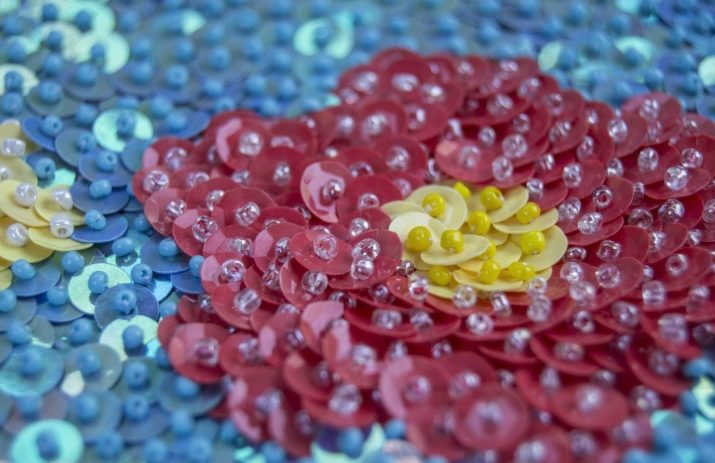
A marker can be used to create intricate patterns on fabric. The selected patterns are applied to the surface of the material. Sparkles are sewn along the contour of the pattern.
Having mastered the basic techniques of working with sequins, over time it will be possible to learn how to make real masterpieces from them.



